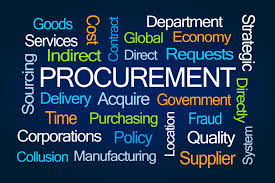The stages of procurement

Below we go into detail about the five main stages of the procurement procedure. The procurement process is broken down even further into smaller steps in practice.
- Planning requirements
The purchase request is the first step in every procurement process. You identify a need in your business and tell the purchasing department to procure the goods necessary to satisfy the requirement.
Three types of requirements are generally required:
- Primary requirements: All the products and goods (end products) you sell to customers.
- Secondary requirements: These are all the materials (raw materials, parts or assemblies) that you will need to make the product.
- Tertiary Requirements: Tertiary needs include, for example, operating and auxiliary materials as well as wear-and-tear tools that are needed in production, but don’t flow directly into the final product.
Request for Procurement
You can submit a request for procurement to the purchasing department once you’ve identified your requirement. You will find the right forms in your company, which ask for all the information you need, such as the type of item to be purchased, the quantity or the reason behind the request. The request is then reviewed by purchasing. For hiring staff, consider a procurement recruitment agency like https://talentdrive.co.uk/
Approval
The purchase order will be approved if the Purchasing department does not object to it. The budget must be approved as well.
Issue purchase order
Once the approval is granted, the purchase order can be launched.
- Supplier Selection and Quotes
The source of the goods and services is a crucial factor in procurement. As part of strategic supplier control, it is important to select the right suppliers before you start your procurement process.
The selected suppliers will then provide you with non-binding quotations, either for a general inquiry or to meet your specific needs. Compare the quotes in terms of price, quality, delivery time, and payment terms.
- Order confirmations and purchase orders
When you find a quote that is acceptable, place the order. When you receive your order acknowledgement be sure to check the data against the PO. You should also monitor your order and keep a record of the history. Ensure, for example, that the correct items are delivered in the appropriate quantity and that delivery times are adhered to.
- Incoming goods
The delivery of the goods must be carefully checked and documented. This step is dominated by the following questions:
- Is the delivery in accordance with the order?
- Is the delivery in accordance with the information provided on the delivery note
- Payments Processing
The next step is to make the payment. Payments are made according to the terms of your contract. You may have agreed on a down payment, or an advance payment, prior to delivery.
The accounting department must review and record the invoice in any case before it can be posted and a payment authorisation issued. The procurement process ends with payment.





